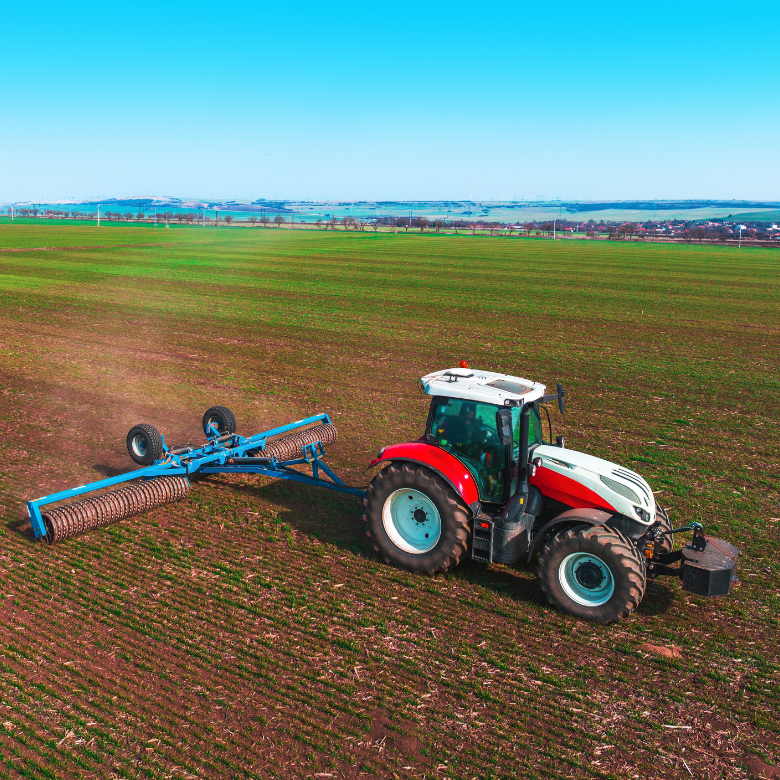The health of our plants largely depends on the quality of the soil. Farmers and fruit growers are well aware of this. In their case, this is particularly important, as fertile soil translates into crop yields, their earnings and the health of consumers. Unfortunately, they are facing many challenges today. Soil can be damaged by, among other things, natural disasters, the effects of climate change and pollution. Fortunately, in many cases we can carry out soil remediation. Find out how the process works.

Soil remediation – what is it?
To find out what soil reclamation is, it is worth first looking at the causes of its degradation (deterioration of quality and nutritional content). Unfortunately, more and more of them continue to appear. Most often, we divide them into those caused by human activity and those caused by natural processes.
Soil remediation is necessary due to phenomena such as:
- prolonged droughts that lead to soil desertification,
- reduction in biodiversity,
- flooding and water erosion,
- excessive use of mineral fertilisers,
- soil acidification, caused by, among other things, river pollution and acid rain,
- over-intensive cultivation,
- excessive growth of pathogens in the soil.
The methods of soil remediation that we are familiar with are therefore aimed at restoring its use value. If carried out correctly, the process leads to fertilisation of the soil, restoration of its structure, an increase in biodiversity and nutrients and, consequently, an increase in yields.
What are the methods of soil remediation?
There are several methods of soil remediation. When planning this process, it is important to take into account its degree of degradation, type, weather conditions and other factors. Above all, however, it is worth remembering that no single action will give us long-term results if we do not take care of the basics. Year-round soil care should include:
- pollution prevention,
- the rational use of fertilisers (chemicals in the garden should be used according to the recommendations of the manufacturer and specialists),
- taking regular measurements of soil pH.
Such measures will allow us to monitor the condition of the land on an ongoing basis and then plan soil remediation accordingly. We can choose from technical, mechanical and biological methods. Sometimes a combination of several approaches proves most effective.
- Technical soil remediation consists of soil consolidation, drainage or irrigation (as required) and landscaping.
- Mechanical reclamation includes, among other things, digging up the soil, including so-called deep ploughing, and loosening deep soil layers.
- Biological remediation of the soil means cultivating and fertilising it properly. An example is the liming of a field, which we carry out to deacidify soil with a pH index that is too low.
Soil remediation in the garden must be planned accordingly. Below, we will give you some tips to make it more effective.

The various stages of soil remediation
The corrective actions must be carried out in the correct order. Before moving on to technical and biological reclamation, preparations should be put in place. This primarily means clearing the site (removing unnecessary vegetation, dirt, debris, etc.) and measuring the soil pH. It is not enough for us to measure using one of the home methods. Only giving a sample to the laboratory will guarantee you an accurate result. Based on this, you will assess whether soil deacidification is necessary. If so, one of the next steps will be its liming. To do this, it is important to purchase a good quality product such as the 20W fertiliser lime offered by the PCC Group.
After the preparation stage, you can move on to technical soil remediation. Correct landscaping, including the slope, and the restoration of soil that was damaged during the first phase of works will be key.
The technical method is complemented by the biological method (these are much less frequently practised separately). This is the final stage, involving appropriate fertilisation of the soil and the introduction of new plants into the environment.
Benefits of soil remediation
It is difficult to list all the advantages arising from the soil remediation process. Indeed, there are many, both for farmers, consumers and the environment. Here are the most important of these:
- reducing harmful substances, including heavy metals,
- counteracting the proliferation of harmful microorganisms while promoting beneficial organic matter
- increasing yields,
- reducing the susceptibility of the soil to erosion,
- increasing the soil’s capacity to store water,
- increasing the level of nutrient uptake by plants.
It is worth mentioning that, by law, soil remediation is necessary if it has been degraded by non-agricultural activities. We then recommend that you implement all the measures listed in the right order to increase soil fertility, thus taking care of your crops and the environment.
- Baran, S., Problemy rekultywacji gleb zanieczyszczonych przez metale ciężkie, Zeszyty Problemowe Postępów Nauk Rolniczych 418.2 (1995), 697-702.
- https://wmodr.pl/files/VstadIMkuHsfivER9Za8Gof9cnaxIJ2U05l90RoP.pdf
- https://www.infona.pl/resource/bwmeta1.element.baztech-39f5b548-a5c0-4a1e-b898-0b82981747b3/content/partDownload/64b232f4-693b-328b-a7c3-13c901defbe1
- Greszta J., Morawski S. "Rekultywacja nieużytków poprzemysłowych" PWRiL Warszawa 1974
- Natalia Wanda Skinder "Chemia a ochrona środowiska" WSiP 1999